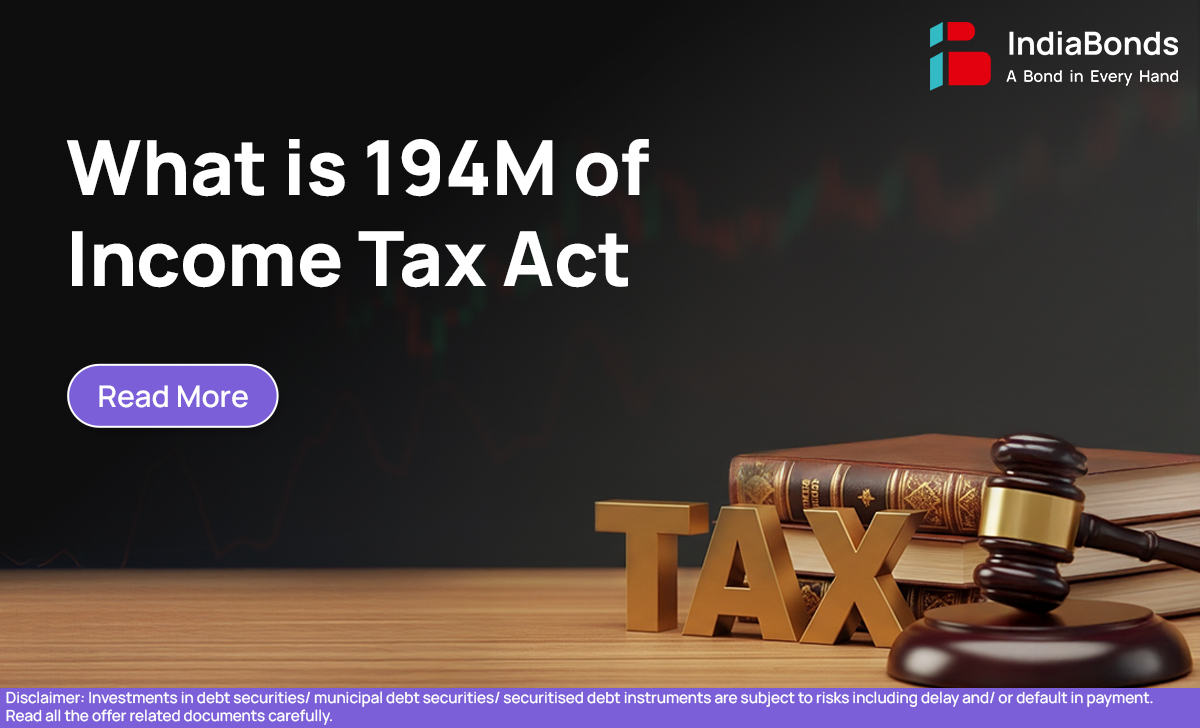What is 194M of Income Tax Act

Okay, quick question — have you ever paid someone a big amount for a personal project? Like a contractor for your new home, a wedding planner for your daughter’s big day, or even a fancy interior designer?
If the answer is yes — and if the amount you paid was more than ₹50 lakh in one year — there’s a tax rule that might apply to you, even if you’re not running a business.
It’s called Section 194M of the Income Tax Act, and it’s one of those rules that’s easy to miss… until it’s not.
Let’s make sense of it, minus the legal jargon.
So What Exactly is Section 194M?
Think of it this way: when businesses pay professionals or contractors, they usually deduct some tax before making the full payment. This is called TDS (Tax Deducted at Source). Now earlier, individuals like you and me weren’t expected to do this. But then the government noticed that lots of high-value payments were happening from personal accounts — and there was no TDS.
So they brought in Section 194M.
It simply says —
If you’re an individual or part of an HUF (Hindu Undivided Family), and you’re paying more than ₹50 lakh in a financial year to someone for services like contract work, professional help, or brokerage, you need to deduct 5% TDS.
Simple? It is. But it’s also easy to forget if no one tells you.
Wait, Me? But I’m Not Running a Business
Exactly. That’s the point.
This rule isn’t for companies or businesses. It’s for regular people who happen to make a big payment in a year.
Let’s say:
- You’re building a house and paying a contractor ₹60 lakh
- You’ve hired an interior designer for ₹55 lakh
- You paid a wedding planner ₹70 lakh
- Or gave a broker ₹52 lakh after a property deal
Even if you don’t regularly deduct TDS or file any business taxes, you’ll still need to deduct 5% from the amount above ₹50 lakh and deposit that with the government.
And no, this doesn’t mean you’re paying extra tax — it’s deducted on behalf of the person you’re paying.
Do I Need to Register or Get Some Tax Number?
No, nothing like that. You don’t need to apply for a TAN (Tax Deduction Account Number), which is usually required for businesses.
All you need is:
- Your PAN
- The PAN of the person you’re paying
- Internet banking access
You simply go online, fill Form 26QD, pay the deducted amount, and give the person a certificate (Form 16D) so they can adjust it in their tax return.
The whole thing can be done from your laptop. No running around.
What Kinds of Payments Are We Talking About?
Section 194M applies to services like:
- Construction or renovation work
- Interior designing
- Event planning
- Legal, medical, architectural, or consultancy services
- Commission payments (like a real estate broker’s fee)
Basically, if you’re paying someone for a service — not buying a product — and it’s over ₹50 lakh in a year, this rule probably applies.
How Much TDS Do I Deduct?
Here’s the deal:
- If you pay less than ₹50 lakh, you don’t need to do anything
- If you pay more than ₹50 lakh to one person, you deduct 5% TDS on the extra amount
For example:
You pay your contractor ₹65 lakh in total
That’s ₹15 lakh over the ₹50 lakh limit
5% of ₹15 lakh = ₹75,000
You pay ₹64.25 lakh to the contractor and deposit ₹75,000 as TDS
Important: If the person you’re paying doesn’t give you their PAN, the TDS rate jumps to 20%. So always collect their PAN details first.
What If I Forget or Don’t Do It?
Not ideal.
If you miss deducting TDS or paying it late:
- You’ll have to pay interest for the delay
- You might face a penalty equal to the TDS amount
- That expense may not be allowed when filing your taxes
So yeah, it’s not worth skipping.
Quick FAQs (Because We Know You’re Thinking These)
1. I’m not a business, do I still need to deduct TDS?
Yes — if you paid more than ₹50 lakh in a year for services like work contracts or professional help.
2. What’s the difference between 194M and 194C?
194C is for businesses. 194M is for individuals or HUFs who don’t usually deduct TDS but made a big personal payment.
3. What if I split the payment between family members?
Doesn’t matter. If the total paid to one person is over ₹50 lakh — from any source — TDS applies.
4. Is this extra tax?
Nope. You’re just deducting it from the payment and depositing it on behalf of the person you’re paying.
In Short
If you’re spending big money on a personal service — something like a home, a function, or even a big property deal — and paying over ₹50 lakh to someone, take a minute to check if Section 194M applies to you.
It’s not scary. It’s just one of those small steps that keeps you in line with the law and saves you from future problems.
And if you ever feel lost with this kind of stuff — whether it’s TDS or investing — IndiaBonds is built exactly for that. To make things simpler, clearer, and more accessible for people who don’t want finance to feel like rocket science.
Disclaimer : Investments in debt securities/ municipal debt securities/ securitised debt instruments are subject to risks including delay and/ or default in payment. Read all the offer related documents carefully.
































